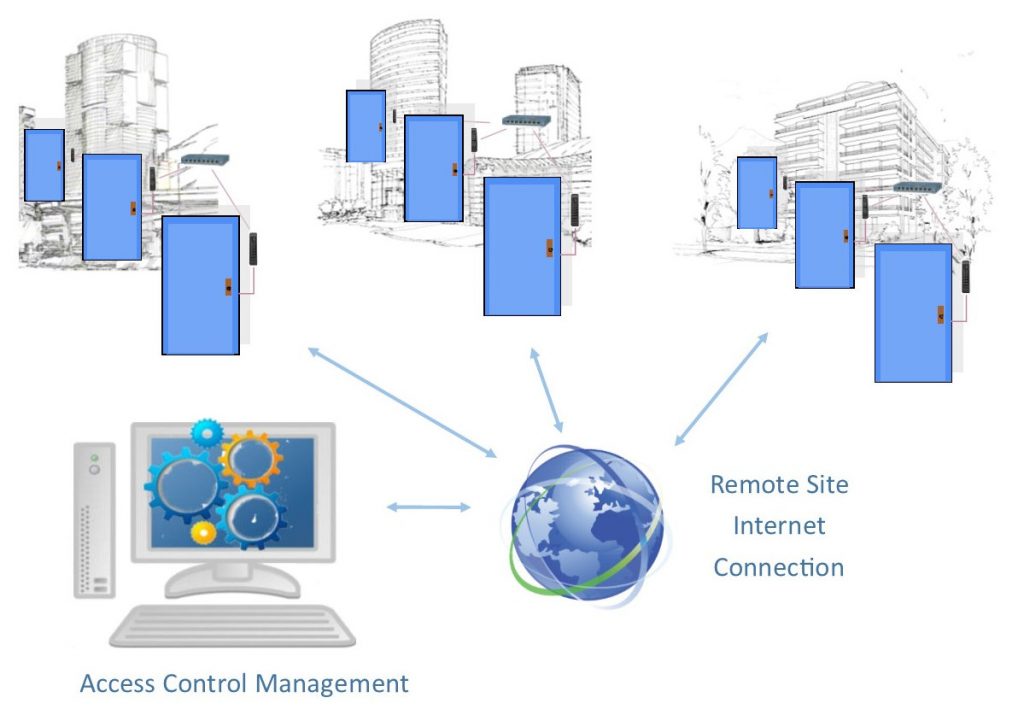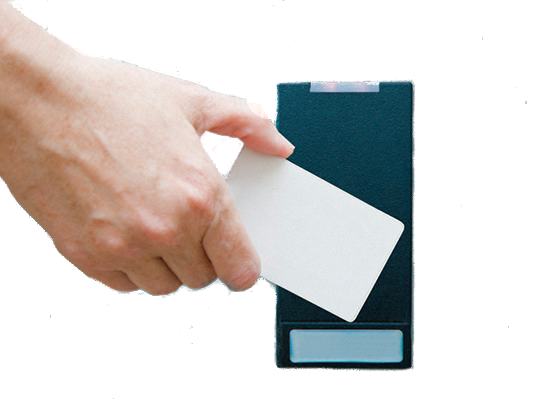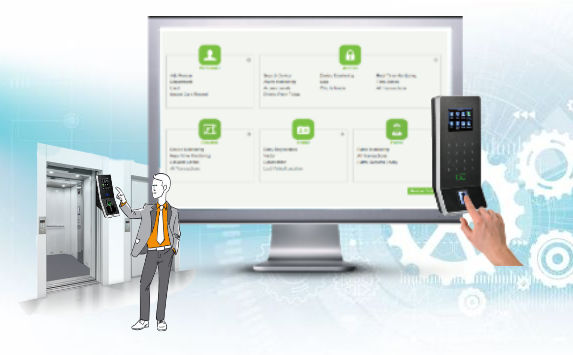How the Door Reader, credential and access control software work

Door access control has become a very important part of our security structure. The door readers control the electric lock and determine who enters the building.
The access control readers use credentials which can be cards that fit in your wallet, or thick lanyard cards with holes that can be worn around your neck, or keyfobs that attach to your keyring. The latest door readers can also use your smartphone to open the door. The most secure credentials are your biometric attribute. Your face or fingerprint provides accurate identification of you rather than the credential you carry.
This article describes how door access control systems work.
The Door Reader for Door Access
The RFID door readers use credentials that have embedded circuits and an antenna. The reader broadcasts a signal that is received by the credential antenna. The broadcasted electrical signal from the door reader contains enough power to energize the circuit in the credential. Once the electric circuit in the credential receives the power it sends back a signal to the access control reader that includes its identification (ID) number.
The latest door readers are smart devices that connect to the network and are powered using Power over Ethernet (PoE). They connect directly to the network and hold the identification codes for all the people assigned to the system. They can work even if the organization’s network is down and the central management software is unavailable. They can operate by themselves as long as backup power is provided to the network switch that connects and powers (using PoE) all the readers.
The door reader transfers the ID number it receives to the controller portion of the door access control system. The Isonas door access system includes the controller function built into the reader while the Hartmann door access control system uses a separate controller. The controller compares the ID number to the list in its memory. If the ID is acceptable it will unlock the door.
The door reader controls the electric lock on the door. The new readers provide the power to control the lock. They also have sensors to detect if the door is opened and Request to Exit (REX) connections to open the door using a button.
Door Reader Credentials for Door Access Control System
The credentials come with a unique internal number that identifies the card credential. You can select the type of RFID credential you would like. For example, there are a thin card, thick card, or keyfob formats. Each credential has a unique number. There are also credentials that use different data formats and frequency between the credential and the door reader. There are Wiegand 26-bit, HID that use 125 KHz frequency, and Smart-cards that use 13.56 MHz frequency.

Since there are many different formats, It is best to order your credentials from the same vendor as the door reader and to order additional credentials from the same vendor.
This will assure that you receive the next batch of numbered credentials with unique numbers. The packages of door credentials are identified and sold based on their starting and ending ID number.
Smartphone Bluetooth Credential
The latest readers can also read a unique number provided by your smartphone. In this case, an app running on your phone connects to the reader using a Bluetooth connection. Most Bluetooth enabled door readers will require you to enable the app when you are near the door reader.
Biometric Readers and Credentials for Door Access
These special biometric readers are designed to read biometric information instead of a card that you carry. There are fingerprint readers, facial readers, finger vein, and other readers that read a characteristic of the person rather than a card that they carry. This is a much more secure system but costs more per door.
Door Access Control Management
Modern door access systems use door access management software that runs on your Windows PC or in a cloud server. The door control management system can be controlled through your PC or an app on your smartphone. The registration data is held in a database in the computer and this information is broadcast over the network to all the readers on the network.

The software maintains the database of all the registered users. It allows new members to be added, deleted or edited. The software associates a person to an assigned credential. Each person is given a credential, and the ID number of the card (credential) is either entered manually or automatically by scanning the credential. Many systems allow you to include a picture of the user so that it is easy to confirm the right person has the credential. This is helpful when the system is integrated with an IP camera system. The access control management systems allow you to determine the time and day a person can enter, as well as the door they can use.
The software also allows you to assign the management person, and who can add new people to the list. In some cases, you can add additional information such as the department the person is in, and other data that may help. To assist in operating the system, some management systems include maps of the premises, that can help you monitor alarm situations. You can also establish alerts such as door opened too long, or even if an unauthorized person tries to open a door.
Access Control Conclusion
Door access control systems include credentials that contain an identification number. The ID is assigned to each person who will use the access control readers. The door access control software runs on your computer or in a cloud computer. The new door readers hold all the IDs and the name of the people assigned to the system.
To learn more about door access control, please contact us at 800-431-1658 in the USA, or at 914-944-3425, or use our contact form.
